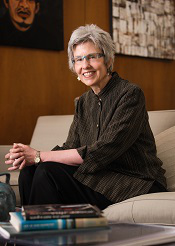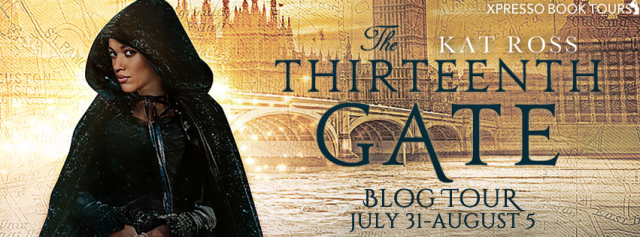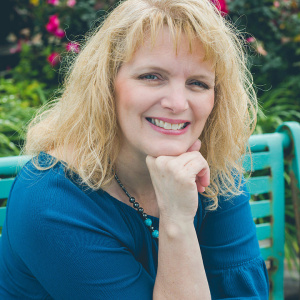“The beginning of a story functions as a microcosm of the whole.”
-Nan Cuba
Nan Cuba is teaching a class for the Writers’ League called “Crafting Openings that Hook the Reader” on June 3 at St. Edward’s University in Austin, TX. This class will focus on analyzing opening pages of texts to give writers strategies to better hook readers within the first few lines and pages of their own projects. Read the interview below and visit the class page to learn more.

Scribe: Are there any common patterns within opening pages that you find most effective and would like to bring to writers’ attention?
NC: The two most important parts of a story are the opening and closing. The opening places the reader in the fictional world, whether realistic or fantastic, current or historical or futuristic, establishing guidelines for understanding what will follow. The protagonist, setting, situation, tone, atmosphere, theme, structure, and narrative voices are introduced. For example, Janet Burroway says the first paragraphs should reveal the character’s gender, age, race or nationality, class, period, region, profession, and marital status, but none of this should be given as information. Instead, it must be implied by appearance, tone, action, or detail.
According to Robbie Macauley, the design of the opening should suggest the story’s design. For example, if the first paragraphs are exchanges of dialogue as people discuss something about their lives, the implication is that the story will be about their attitudes and opinions, that the way they express them will be important. If the opening brings one character forward for the readers to observe, then the story will be about the traits, ideas, experiences, and emotions of that person. If a group opens the story by participating in an event, then the characters’ actions will become the focus. Opening with a generalization signals a story’s emphasis on theme. A reminiscent narrative voice signals a story about an incidents that was life changing. In this way, the beginning of a story functions as a microcosm of the whole.
Scribe: If you had to choose one novel as having your favorite opening pages, which would it be and why?
NC: I’m going to change your question a bit. Instead of focusing on “opening pages,” I’ll share opening lines to three classic novels.
Opening lines should operate much like opening paragraphs but in compressed form. One of the most famous first sentences is found in Leo Tolstoy’s novel, Anna Karenina. The omniscient narrator begins with a generalization: “Happy families are all alike; every unhappy family is unhappy in its own way.” Readers immediately recognize the truth in this observation then realize the story will be about one of these unhappy families, with details about how it got that way. The sentence establishes point of view, introduces the main characters, hints at the conflict, and suggests the theme. Another famous first sentence is from George Orwell’s 1984: “It was a bright cold day in April, and the clocks were striking thirteen.” Since the novel was published in 1949, the title announces this as a futuristic setting, while the opening announces that bad luck is everywhere. Point of view, setting, and conflict are established. A third example is from Ralph Ellison’s Invisible Man: “I am an invisible man.” The reader knows that the story will be told by a first-person narrator, who thinks no one sees him. We don’t know why, but we know his invisibility is the conflict. We find out later that his color makes him socially invisible, so the first sentence also introduces theme.Scribe: Implicit in this class and these examples is that writers need to learn to continually teach themselves how to write–by reading other great writers. Why is it important to practice reading like a writer?
Nan Cuba: Learning the craft of fiction writing is a lifetime pursuit. Like anyone being trained in a skill, we hope for instructions to practice and then confidently use to launch a professional career. But mastering craft is not like learning to drive a car, memorizing which pedals and handles to push, and then breezily moving along. A serious writer doesn’t rely on formulas or trends, but instead learns fundamentals of language usage, grammar, and storytelling, and then applies knowledge, curiosity, and intuition in order to experiment and challenge oneself, resulting in the development of an individual style, one that, like the writer herself, is ever-changing. Proficiency introduces new craft challenges, while the writer constantly strives for originality and innovation. Understanding plot basics leads to de-familiarization; recognizing melodrama’s exaggerations entices one to effectively include it; an expanded vocabulary and facility with language and diction challenge one to experiment with syntax and voice. A person could continuously take classes, but the best teacher shows her students how to teach themselves. Chekhov didn’t have a writing degree; neither does Jonathan Franzen. So, how did they learn craft? By reading like a writer. That means analyzing words, phrases, sentences, paragraphs, characterizations, settings, plot devices, points of view, etc., noting what works and how it’s accomplished. Francine Prose meticulously describes the process in her excellent book, Reading Like a Writer.
Scribe: Reading definitely helps develop writing skills, but not all reading is good or appropriate writing; is there anything to be gained from reading works in which the writing style is not well crafted?
NC: Not really. If you read literary fiction — that is, fiction that emphasizes language and character, as opposed to commercial fiction that focuses on plot — and you analyze its operations, much like a medial student observes a surgeon in the operating room or a doctoral student assists a chemist in the laboratory, over time and with practice, you will come to recognize literary craft workings. That way, when you knowingly read popular fiction for entertainment, which we all occasionally do, much like watching a blockbuster Star Wars movie, you recognize shortcuts and manipulations, the story becoming predictable and flashy, a fun diversion that ultimately confirms your dedication to innovate and challenge yourself, to write stories that reveal nuanced aspects of our common human experience, in other words, to create art.
—
Thanks, Nan!
Click here to register for Nan’s class.
Click here for our current class schedule.
About the Instructor
Nan Cuba is the author of Body and Bread, winner of the PEN Southwest Award in Fiction and the Texas Institute of Letters Steven Turner Award for Best Work of First Fiction, co-editor of Art at our Doorstep: San Antonio Writers and Artists. Her work has appeared in Antioch Review, Harvard Review, Columbia, Chicago Tribune’s Printer’s Row, LIFE, Third Coast, and D Magazine. She has received a Dobie Paisano Fellowship, an artist residency at Fundación Valparaiso in Spain, and was a finalist for the Humanities Texas Award for Individual Achievement. She is the founder and executive director emeritus of Gemini Ink, a nonprofit literary center, and teaches in the MA/MFA Program in Literature, Creative Writing, and Social Justice at Our Lady of the Lake University in San Antonio, where is writer-in-residence. Her website is nancuba.com.
Advertisements Share this post!- More





